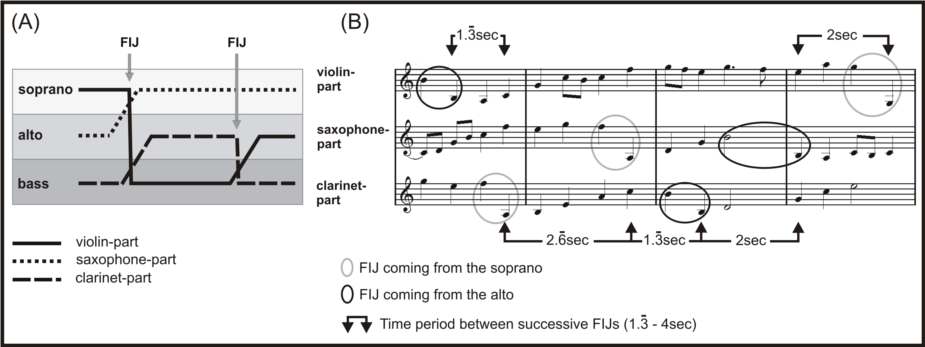Spatial
selective attention in a complex auditory environment such as
polyphonic music - Sound example and experimental design

Figure 1A: Example
of the melody course of the three parts. Part-A (violin) initially
contains the soprano, part-B (descant saxophone) the alto, and part-C
(clarinet) the bass register. A falling interval jump (FIJ) in the
melodic contour of at least one octave in part-A (FIJ in the soprano)
makes it to become the bass voice register; isochronal part-B becomes
the soprano and part-C becomes the alto. Later in this example, an FIJ
occurs in part-C while forming the alto, after this FIJ part-C becomes
the bass again while part-A take on the alto.
Figure 1B shows an excerpt of a musical stimulus. FIJs occurred in each
part with the same number. Targets were defined as those occurring in
part-A, distracters as those occurring in part-B and -C. FIJs in the
melodic contour happened in parts, if they covered the soprano or the
alto. The time period between successive targets (irrespective of the
part and of being relevant or irrelevant) was between 1333 and 4000ms.
Click HERE for a sound example (note that the size of this file is about 2.5MB)
